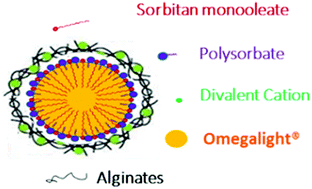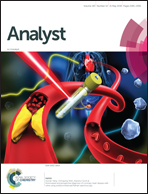ATR-IR coupled to partial least squares regression (PLSR) for monitoring an encapsulated active molecule in complex semi-solid formulations
Abstract
Attenuated Total Reflectance-Infrared (ATR-IR) spectroscopy holds great promise for industrial applications as a quality control tool for complex galenic formulations. Although the technique is often promoted for the molecular information it delivers in a label free and cost effective fashion, other advantages can emerge compared to the gold standard analytical tools such as liquid chromatography coupled to mass spectrometry. The present study demonstrates how ATR-IR measurements enable accurate quantitative analysis of an active cosmetic ingredient such as Omegalight® encapsulated in a complex alginate based nano-capsule. The study demonstrates how precise concentrations can be obtained without the requirement for fastidious extraction and separation protocols prior to ATR-IR analysis. However, data mining remains a crucial aspect with particular emphasis on the preprocessing of the data that will be subjected to Partial Least Squares Regression (PLSR) analysis. Therefore, different pre-processing methods have been evaluated to investigate the relationship between corrections applied and PLSR outcomes (i.e. precision, ratio of performance to deviation (RPD) and accuracy of the analysis). Ultimately, it has been found that, against all expectations, some of the preprocessing methods do not necessarily lead to improvements in the end result, while Extended Multiplicative Scattering Correction (EMSC) is the only one which delivers satisfying results, as defined by a Root Mean Square Error (RMSEV) of 0.07% (w/w) and a RPD greater than 30 when performing analysis over the range 0.4–8.2% (w/w). Despite the presence of large amounts of additives such as glycerol and preservatives in the formulation, implementing Leave One Out Cross Validation (LOOCV) further validates the method with a RPD of 18 and relative errors for the predicted concentrations below the 5% (w/w) threshold, hence demonstrating that ATR-IR has analytical capabilities for applications in the cosmetic industry.



 Please wait while we load your content...
Please wait while we load your content...